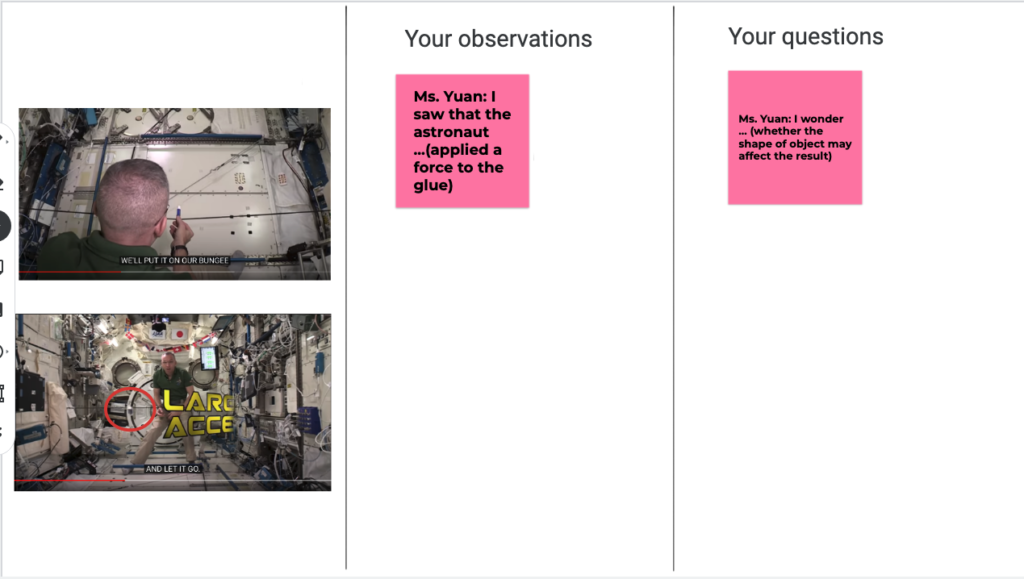Free-body Diagram with Nearpod
big idea
Physicists use free-body diagrams to model the forces exerted on a macroscopic object.
Learning Objective
Students will be able to (SWABT) apply free-body diagrams to model the forces exerted on macroscopic objects in word problems.
NGSS Standard
HS-PS2-1: Analyze data to support the claim that Newton’s second law of motion describes the mathematical relationship among the net force on a macroscopic object, its mass and its acceleration.
Develop Understanding Through video clip
Guiding Question – embedded in the nearpod lesson
[01:22] What are 3 forces acting on the book? What are their directions?
[02:41] Is this a free diagram of the book?
[04:19] What is the force missing in this free body diagram?
[05:32] Is this the correct free body diagram of the cannon ball?
assessment – Practice problem
A book is at rest on a tabletop. Diagram the forces acting on the book
An egg is free-falling from a nest in a tree. Neglect air resistance. Draw a free-body diagram showing the forces involved.
A flying squirrel is gliding(no wing flaps) from a tree to the ground at constant velocity. Consider air resistance. A free-body diagram fro this squirrel looks like …
A rightward force is applied to a book at rest, in order to move it across a desk. Consider frictional forces. Neglect air resistance. Construct a free-body diagram for the book.
A skydiver is falling with a constant velocity. Consider air resistance. Draw a free-body diagram for the skydiver.
Nearpod Integration
Video clip with guided questions: used the Nearpod video editor to embed the questions in the video, and students will answer the questions to deepen their understanding while watching the video.
Practice problems with the drawing function: used the Nearpod drawing function to allow students to draw their FBDs after each question. I could monitor the progress of each student and provide immediate feedback to them. I also usually share sample works from students to promote collaborations in the classroom. I usually use the anonymous mode to avoid embarrassing the students.
Bloom’s taxonomy applied in the activity
Newton’s 2nd Law of Motion
Learning Task: analyze the video clip by writing observations and asking questions
General Graphic Organizer to support group activity

I found in my teaching practices that proving such graphic organizers with list of tasks will improve the quality of the talk in small breakout rooms, especially in virtual classrooms.
Scaffolding ELs and students with special learning needs

In addition to the guiding questions, I selected several snapshots from the video for the students to focus on. I also provided sentence starters for the students to learn to organize their language.
Not the end
By the end of the lesson series, we revisited the video and rewrote the observations and claims here using specific academic vocabulary.

Disaggregate instruction pedagogy
I was inspired by the disaggregated instruction pedagogy proposed in Science in the city by Dr. Brown when designing this learning activity. I tried to provide opportunities for our students to talk about the phenomenon using their own words, build up the understanding of physics concepts through their own ‘language,’ and allow them to practice the academic language after mastering the conceptual understanding.
